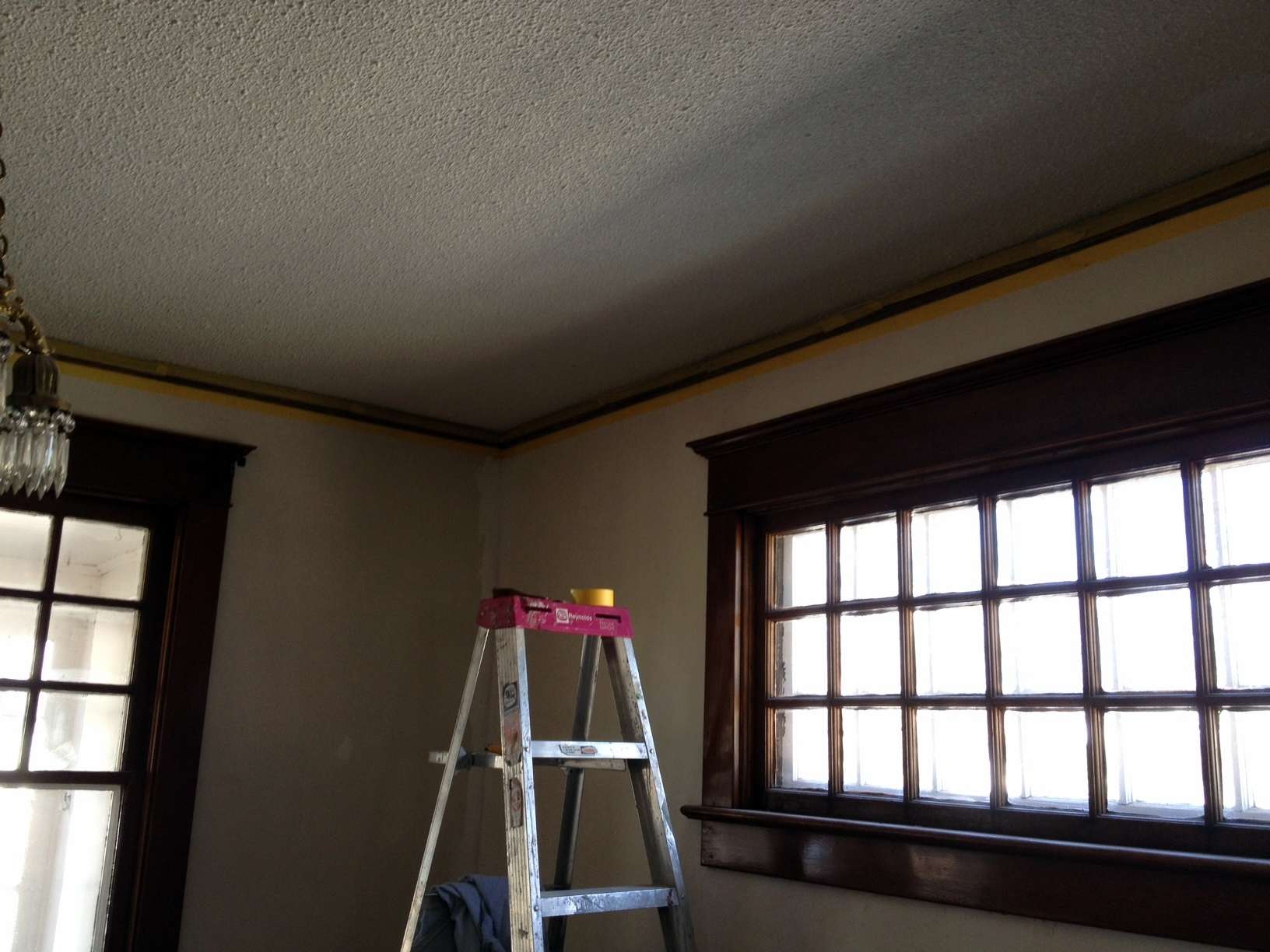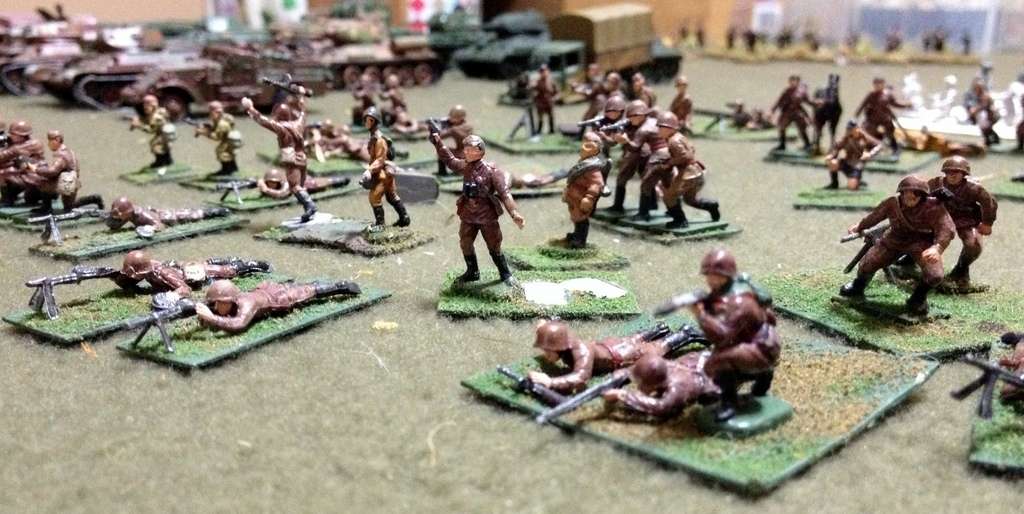
A few months back I posted here on an interview with Don Greenwood, formerly of Avalon Hill, as run by David Dockter on his excellent Guns Dice And Butter blog. While on David's site I noticed that he had also recorded an interviewwith wargaming legend Jim Dunnigan, the founder of Simulations Publications, Inc (SPI), and resolved to go back and listen to that interview when time permitted. I've now done so, and the interview unleashed a horde of gaming memories and thoughts which I'd like to share with you. Hopefully I'll say something interesting.
A small(ish) preamble is necessary here. When I was a kid in a small town in Western Canada in the mid 1970s, my older brother Alex introduced me to a copy of The Courier, a small mimeographed newsletter in a construction paper cover that introduced me to the world of toy soldiers. God alone knows how The Courier found its way to our little town in the Rockies. I saw photos of grown men playing battles with stiff toy soldiers of Scruby/early Minifigs vintage on tables adorned with wooden hills and model trees, and I wanted so much to do that. But I was a kid and my allowance and paper route money wouldn't go allow for armies of toy soldiers, so that dream got deferred for the day when I would one day be a grown up.
That kid grew up and now owns more toy soldiers than he could possibly imagine back then, so the story ends happily, but it wasn't so sad in the middle, either, because that little kid discovered paper wargames thanks to two people: David Lewis and Jim Dunnigan. David Lewis was the son of friends of my parents, and he was living at home while pursuing a summer job. David became my hero. He had just finished a degree in history down island at the University of Victoria. He was worldly and listened to Boz Scaggs and Fleetwood Mac, which opened my ears to adult music, and he introduced me to paper wargames, starting with a great SPI Waterloo monster game called Wellington's Victory, a Frank Davis design that had just been published (1976). With the abundant patience of a surrogate big brother, David introduced me to the world of adult wargaming that Jim Dunnigan had opened up to us with SPI. I still have a treasured copy of this game that David gave me as a gift.
That year, 1977, I persuaded my parents to get me a copy of the SPI house magazine, Strategy and Tactics, which came with a game in every issue, and a lot of the S&T games I got were Dunnigan titles - Berlin '85 was a special favourite of mine because it was scary cool at the time to think about World War Three and it had some innovative mechanics, including unknown unit strengths, so that when you moved a unit into contact you flipped it to the revealed strength side to find out how good it was. That same mechanic featued in a bonus game that came with my S&T subscription, Panzergruppe Guderiananother Dunnigan title.
While the artwork in the SPI maps and counters of that era was primitive compared to those published today by the likes of GMT and Victory Point, there was a cool modernist vibe about SPI that appealed to me. The sleek plastic boxes with their build in counter trays had a space age aesthetic that the Avalon Hill bookcase games didn't have (almost everything about AH was stodgy and slightly dull), while the SPI cover art and counters were minimalist but appealing.
When I was a high school senior I lost touch with David but remained connected to SPI. My proudest possession in those years was their monster game Atlantic Wall, a divisional level treatment of Normandy where the smallest unit was the company(!). Through most of Grade 12 I had all five maps spread out on my bedroom floor and tiptoed around them to and from bed. My parents were bemused. I had the sense that I was somehow touching history in a real sense, and even if I didn't really understand all the nuances of the Normandy campaign I felt I was doing something very important and grown up.
When I went to college in 1980 I fell in with role players who mostly played Dungeons and Dragons, and there never seemed to be the room or time to spread out a big game for any period of time. In the mid 80s came graduate school and a turn to miniatures gaming, so that decade wasn't very kind to my boardgaming, and in the 90s I alternated between computer games and miniatures. One of the computer games that consumed a lot of my time was an early MUD, a multiplayer online game, Hundred Years War, hosted on the GEnie network (anyone remember GEnie?) that was a Dunnigan design. Little did I realize then that the evolution of my gaming life in the 70s, 80s and 90s pretty much matched the rise and fall of SPI and paper gaming.
In the GDB interview, Dunnigan doesn't talk a lot about his own designs, but he does describe with broad strokes how SPI came on the scene in the 70s and took wargaming in a direction that the more conservative Avalon Hill wouldn't go in. You get a sense of how clever this guy was in seeing opportunities, such as the appetite for contemporary/Cold War games, particularly from US military gamers, that led to titles such as Red Star/White Star. My own personal favourite was Dunnigan's World War Three (1975), a grand strategic game based on his WW2 engine, where players had a limited number of nukes which could obliterate whole hexes and all the fleets and armies therein, but each time at the risk of triggering a global nuclear exchange which ended the game. My younger brother and I blew up the world quite a few times playing that game. An interesting moment in the GDB interview is hearing JD describe how interest in contemporary gaming declined precipitously ("it fell of a cliff" is JD's phrase) after the Cold War ended.
Another takeway from the interview is what a tech-savvy businessman JD was. SPI was brilliant at capturing user feedback and figuring out what gamers wanted. In a pre-Kickstarter era, each issue of S&T would float several design ideas and make production decisions accordingly. I remember poring over the stats and rankings at the back of each issue of S&T, numbers that Dunnigan himself crunched using the programmable computers of the day. The interview also shows that JD had a pretty shrewd idea of what games would sell, and of how SPI's SF and fantasy titles would merit larger print runs (maybe 10 to 12 thousand) than the historical titles did. Several non-Dunnigan titles of that era, War of the Ring (1977) and their thinly-disguised Star Wars ripoff, Freedom in the Galaxy (1979) were friends of mine in high school, as was their terrific little Creature That Ate Sheboygan a homage to the old Godzilla-type movies of the 1950s and 60s. I regret that I have parted with these titles over the years. I suspect that every kid like me who bought Freedom in the Galaxy subsidized SPI's clunky monster games like their legendary Campaign For North Africa.
The trajectory which led to SPI's demise in 1982 pretty much describes the evolution of my own gaming life in those years, which wandered away from paper wargames into roleplaying, computer gaming, and miniatures. AS JD describes it, paper wargaming flourished in the 1960s and 70s because a well educated generation came up that was ripe for the kind of mental and imaginative challenges that wargaming offered. The first crop of AH games offered the appeal of chess, two players locked in an intellectual battle, but SPI exploited the idea that any conflict or historical period in time could be presented as a simulation, which added an extra dimension to the basic appeal of the game. By the late 70s, however, a number of factors, including the rise of TSR and D&D, and the coming microcomputer revolution, spelled the doom of big wargaming companies that were built on the publishing business model. SPI lost customers like me because we had more hobby options in the 1980s.
In the middle part of the interview JD makes a few interesting comments about how miniatures gaming survived and grew as a hobby despite the decline of the paper wargame. He rightly notes that miniatures gaming was always a niche in the hobby, with a high cost of entry in terms of time and money to paint the "figurines" (sic) and to master what he calls the "arcane" rules, but the people who got into the hobby (as I wanted to do when I was a kid lookng at those Courier magazines) were always loyal and enthusiastic. In JD's opinion the limitation of miniatures gaming is that it only allows for tactical games, rather than the grand strategic games that make up so many of his 100+ published designs. While this comment may be true of many club and convention games, a quick survey of wargaming blogs shows many examples of tabletop games that are driven by rich and complex strategic designs.
Another advantage of tabletop gaming that JD doesn't necessarily realize is that his own comments in the interview about how good designs should allow for players tweaking and customizing games (variant and what if scenarios, for example) is eminently true of miniatures gaming. The only limits to how we as gamers can modify history, explore what-ifs, etc are our imaginations and the number and type of figures/models available to us.
At the end of the interview, JD makes some comments on the barriers to entry to wargaming that apply to all parts of our hobby. The idea that wargames are difficult to learn and play, the "I'm not smart enough to do that", certainly applied to an SPI monster game in its day, and applies equally to many tabletop games, though we've come a long way from the scary, brain-busting rules books of the WRG era. JD is a great believer in turnkey solutions, giving the new player everything he or she needs to get started and making entry to the hobby as painless as possible. Those of us who mock companies like Battlefront or Games Workshop might do well to remember that they understand how to get new people/customers into the hobby. The strategic alliances developing between Warlord Games and Osprey, or the Battlegroup rules affiliated with PSC, or moves that JD would approve of.
Hearing David and JD talk for almost ninety minutes is a great treat. Love him or hate him, Dunnigan was a key player in our hobby. He had a great, even modernist, belief that with enough data and a spreadsheet you could model pretty much anything. His best games had a few brilliant mechanics, and his strategic level games often included clever political and economic subsystems. Empires of the Middle Ages (1980), another SPI game I have sadly let go of over the years, is a brilliant example. Dunnigan also had a belief technology should be explored and exploited, and he knew that much of what the monster paper game tried to do could eventually be done better by a computer. Today companies like Matrix Games show his foresight. For miniatures gamers who still keep a foot in the paper gaming tradition (or are returning to it, as I am), he's someone we all owe much to. If you want a trip down memory lane, or want to see an annotated list of Dunnigan's 100+ designs, Dockter has one here.
Now, where's my copy of PG Guderian?






































